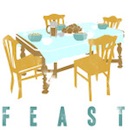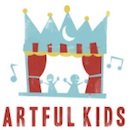That birds, with their riot of color and sound and an ability to fly, have come to be associated with the stories of our deeply human quest to explore such things only makes sense. They are our fellow creatures — dust to dust, ashes to ashes — yet manage to break free of the shackles of gravity and transcend the ground from which we are all made.
All in Truth
 It was not long after we landed that I became keenly aware of my own needs, which seemed myriad and great, physical and emotional and practical. As my pregnancy progressed, my body ached and grew weary very quickly, yet my responsibilities for my son and our household in this new place required a lot of physical activity. I was coming from a place where my sanity, and that of our son, was maintained by interacting with other families with small children on a daily basis, but in Iceland I knew no one.
It was not long after we landed that I became keenly aware of my own needs, which seemed myriad and great, physical and emotional and practical. As my pregnancy progressed, my body ached and grew weary very quickly, yet my responsibilities for my son and our household in this new place required a lot of physical activity. I was coming from a place where my sanity, and that of our son, was maintained by interacting with other families with small children on a daily basis, but in Iceland I knew no one. I did want to tell my story kindly. I love my family. It delights me that that is how it has come across. I see no benefit for myself or others if I tell a story filled with anger and bitterness. Frankly, I think if I am unable to extend mercy to the people in my story, and receive the gifts they have given, even ones that have caused suffering, then I should wait until I am able to process, to heal more deeply.
I did want to tell my story kindly. I love my family. It delights me that that is how it has come across. I see no benefit for myself or others if I tell a story filled with anger and bitterness. Frankly, I think if I am unable to extend mercy to the people in my story, and receive the gifts they have given, even ones that have caused suffering, then I should wait until I am able to process, to heal more deeply.The Work of Love
As my journals filled with the details of my life — raising children to adulthood, becoming a writer, years of hosting people and events, the development of Art House America, pursuing a seminary degree, and becoming a grandmother — the words on the page gave me eyes to see the significance of the smaller things that are always present.
Sure, there are high points, nameable moments of climax — but most of my daily life still takes place in the in-between.
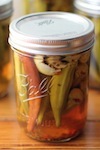 I wanted to do it alone. I lit the candles in the kitchen and turned on some music. Today, this would be the way I talked to God, and what I wanted to talk about was my grandmothers, and the way I wanted to talk about them was by doing something with my hands that their hands had done time and again.
I wanted to do it alone. I lit the candles in the kitchen and turned on some music. Today, this would be the way I talked to God, and what I wanted to talk about was my grandmothers, and the way I wanted to talk about them was by doing something with my hands that their hands had done time and again. In contrast, the pieces of my life didn't feel safe or ordered at all, but wedged inside a room too small to contain them. My emotions were beginning to seep uncontrolled from that room faster than I could shove them back in. Desperately, I wanted to dig myself free from this avalanche of events that had happened, all so abruptly and without my permission.
In contrast, the pieces of my life didn't feel safe or ordered at all, but wedged inside a room too small to contain them. My emotions were beginning to seep uncontrolled from that room faster than I could shove them back in. Desperately, I wanted to dig myself free from this avalanche of events that had happened, all so abruptly and without my permission.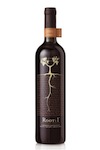 The specifics of what transpires under the surface of the soil are largely unknown. When uprooted at the end of the growing season, my seven-foot-tall okra plants showed strong but at the most only twelve-inch roots. Perennials and other plants may truly look dead, yet the root lives and continues to prepare for the next season of fruitful beauty.
The specifics of what transpires under the surface of the soil are largely unknown. When uprooted at the end of the growing season, my seven-foot-tall okra plants showed strong but at the most only twelve-inch roots. Perennials and other plants may truly look dead, yet the root lives and continues to prepare for the next season of fruitful beauty. It is the same with our souls. We cannot see all that is being worked out below the surface. The strength of what lies beneath is able to sustain, support, and give life to great things.
Interview Series: MAKING — A Conversation with Bruce Herman
I dream of the world as sacred space — as a living cathedral. Man-made cathedrals merely echo the natural world with its soaring sequoias, canyons, oceans, mountain peaks. This world was made by a Maker who loves and enters the creation to know it from the inside. This Maker is not aggressive or possessive as we humans understand Him, but is rather hidden, loving, generous to a fault.
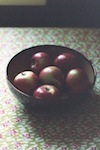 I took a photo after all, of the one thing of hers that I have asked for: her pencil cup, made of rolled magazine pages, pencils included. It came out blurry. Once I pulled the car up the drive and loaded my bags, she was ready for the customary parting hug on the front stoop. But I had one more task, to be completed indoors, so we returned to the kitchen.
I took a photo after all, of the one thing of hers that I have asked for: her pencil cup, made of rolled magazine pages, pencils included. It came out blurry. Once I pulled the car up the drive and loaded my bags, she was ready for the customary parting hug on the front stoop. But I had one more task, to be completed indoors, so we returned to the kitchen. I train my eyes to rest on these beautiful things during work days, reminiscent of the time I discovered an open E chord on my guitar and played it for a solid half hour in as many ways I could, with my ear resting on the body of the instrument to soak up the resonance. There’s a stability I’m finding here that is good and right, that reminds me of the growing stability of my hands mastering those first basic chord shapes and transitions.
I train my eyes to rest on these beautiful things during work days, reminiscent of the time I discovered an open E chord on my guitar and played it for a solid half hour in as many ways I could, with my ear resting on the body of the instrument to soak up the resonance. There’s a stability I’m finding here that is good and right, that reminds me of the growing stability of my hands mastering those first basic chord shapes and transitions.Interview Series: MAKING — A Conversation with Kim Thomas
I absolutely think that the history of frequent moves, adjusting, new people — all that affects my making today. It takes a lot of courage to be a maker of any kind. It requires many decisions, commitments, and lonely times in your head. The nomadic life built up my courage for new things and change, sort of immunized me to sameness, and made me invite the adventure of mystery and unknown.
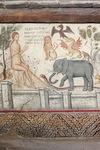 Name is related to identity, and identity comes in part from story. When I learned more of our stories, I could see my family and myself in a new, larger context; I could enter into relationship — into community — with both the quick and the dead; I could inhabit a richer understanding of what community means. I could even “burst into poetry” and celebrate my heritage, my name.
Name is related to identity, and identity comes in part from story. When I learned more of our stories, I could see my family and myself in a new, larger context; I could enter into relationship — into community — with both the quick and the dead; I could inhabit a richer understanding of what community means. I could even “burst into poetry” and celebrate my heritage, my name.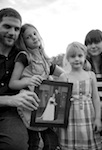 We were driving home to Nashville after visiting family in Chattanooga — a 2-hour drive that we do fairly often. The moon was out, the kids were asleep in the back, and all was silent except for the hum of traffic as I held my husband’s hand and laid my head against the window. I tried to count how many trips we’d made like this when suddenly, the sweetest thought dropped into my heart. This is what I’m going to remember when I die.
We were driving home to Nashville after visiting family in Chattanooga — a 2-hour drive that we do fairly often. The moon was out, the kids were asleep in the back, and all was silent except for the hum of traffic as I held my husband’s hand and laid my head against the window. I tried to count how many trips we’d made like this when suddenly, the sweetest thought dropped into my heart. This is what I’m going to remember when I die. Her note was written on an old index page of a ledger and she too adhered a bird sticker to the faded surface. She ripped the page right out of the book; I loved the spontaneous, rustic aesthetic. The postcard did in fact bear her greeting from four years ago as well as a dignified black cat on the glossy cover along with French writing — she went to Paris, too. Belated, yet thoughtful. I don’t know many people who’d realize they’d forgotten to send a postcard four years ago, then actually send it upon the moment of realization. My friends are a rare, whimsical, priceless bunch.
Her note was written on an old index page of a ledger and she too adhered a bird sticker to the faded surface. She ripped the page right out of the book; I loved the spontaneous, rustic aesthetic. The postcard did in fact bear her greeting from four years ago as well as a dignified black cat on the glossy cover along with French writing — she went to Paris, too. Belated, yet thoughtful. I don’t know many people who’d realize they’d forgotten to send a postcard four years ago, then actually send it upon the moment of realization. My friends are a rare, whimsical, priceless bunch. I twisted around in my seat to watch our newborn daughter, cuddled with her blankets and sleeping through the ride. I wanted to say that it would all grow back. That I, too, would one day take a bluebonnet picture of my own daughter shaded by live oak trees. That the trees surely dropped seeds and those seeds would grow into seedlings, saplings, and young trees. But we passed in silence. The Loblolly pines would recuperate, but live oaks grow too slowly. Hundreds of years would have to pass. The land cannot return in time for my daughter.
I twisted around in my seat to watch our newborn daughter, cuddled with her blankets and sleeping through the ride. I wanted to say that it would all grow back. That I, too, would one day take a bluebonnet picture of my own daughter shaded by live oak trees. That the trees surely dropped seeds and those seeds would grow into seedlings, saplings, and young trees. But we passed in silence. The Loblolly pines would recuperate, but live oaks grow too slowly. Hundreds of years would have to pass. The land cannot return in time for my daughter.Hospitality for Modern Pilgrims
Hospitality from the margins is a widow’s mite welcome, made abundant by its sacrifice. Perhaps it means simple spaces. Tuna sandwiches around an undressed card table. Popcorn and cocoa by candlelight. Makeshift beds on the floor of your dorm room. Family holidays open to those who are far from family. Hospitality that is “real and costly,”5 not because it required a $300 grocery bill, but because it came out of your poverty. Extravagant generosity with financial, physical, and emotional resources, regardless of the social standing of the guest.
The Graduation Card
If I was looking for a card for an 18-year-old high school graduate, I’d still have my usual inner turmoil, but it would be a little different story. In this case, our graduating friend is in his 40s, getting his master’s degree after a two-year program at a university in the U.S. that is 7,000 miles away from his wife and children and community in Africa. English is his third language — he only heard it spoken for the first time 10 years ago. He comes from an economically poor community that has experienced a great deal of trauma, and he will be returning there soon.
April in Paris
My mother adored Daddy, as she called him, but she swooned for Ravel. Family legend has it that a recording of Ravel’s best known piece, Bolero, which somehow turned up in my mother’s possessions when in high school, was promptly destroyed, being deemed far too sensuous for the impressionable oldest daughter of a Swedish Baptist preacher. And she could painfully recall not being able to attend a friend’s birthday party as a child in Pasadena, because the planned activity for the group was to see a movie — a novel, rare treat in 1930. The first time I saw the film Babette’s Feast, I had some inkling of the dilemma my mother’s upbringing must have wrought in her blossoming creative life, as it would later in mine.
 You have been betrayed by your body, when you had gone around all this time thinking you and your body were one thing, inseparable, a winning team. And although the doctor’s approach you with their sterile, shining instruments and unfailing clinical cool, still you panic, and inside you feel hurt.
You have been betrayed by your body, when you had gone around all this time thinking you and your body were one thing, inseparable, a winning team. And although the doctor’s approach you with their sterile, shining instruments and unfailing clinical cool, still you panic, and inside you feel hurt. Because you are hurt.
And although doctors now have treatments for most maladies, what comes after that — the healing — is something one must do alone.
 The remarkable thing about the non-celebrity crush, then, is what it says about the crush-er, so to speak. The unsuspecting object of your enthusiastic esteem serves as an indicator of something you yourselves aspire to do. Just as the celebrity culture feeds on those who long to attach their identity to an admired other, the object of your own great admiration tells you quite a bit about your own loves and longings. It tells you a little bit more about how you aspire to contribute to your world.
The remarkable thing about the non-celebrity crush, then, is what it says about the crush-er, so to speak. The unsuspecting object of your enthusiastic esteem serves as an indicator of something you yourselves aspire to do. Just as the celebrity culture feeds on those who long to attach their identity to an admired other, the object of your own great admiration tells you quite a bit about your own loves and longings. It tells you a little bit more about how you aspire to contribute to your world.



